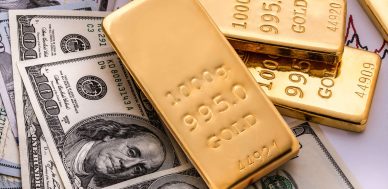Less Stringent Interest Rates Boost Gold, Sink Dollar
Gold prices jumped above the $1,200-an-ounce mark to land at $1,229 as the U.S. Federal Reserve struck a more dovish tone than expected after its meeting this week.
While the market was anticipating up to four interest rate hikes this year, now most watchers are anticipating only two more rate hikes in 2017 instead. This realization created a boost in gold interest and deflated the U.S. dollar. (Source: “Gold prices pop as Fed projects just two more rate increases in 2017,” Financial Times, March 15, 2017.)
Gold prices had been dropping in anticipation of a more aggressive policy coming from the Federal Reserve. This change in tone has pushed gold prices higher and has also increased optimism around the gold price forecast.
The next interest rate hikes are expected to come in June and December, with the probability of these two hikes increasing following Wednesday’s decision.
The softer tone of the Fed has reinvigorated gold bugs. Bank of America Corp (NYSE:BAC) released a note stating that the bank sees gold rising as high as $1,400 by year’s end. The Fed may yet change its policy, but the softer tone and weaker interest rate hikes than were previously expected have put the precious commodity on the rise, at least for the time being. (Source: “Gold to jump $200 by end of the year, Bank of America says,” CNBC, March 9, 2017.)
Interest rates were raised by a quarter of a percent, to a range of 0.75% to one percent.
Inflation has also begun to inch closer to the Fed’s two-percent target. It is expected to rise as a result of U.S. President Donald Trump’s proposed fiscal stimulus. Such a move could again help push gold prices higher, as the precious yellow metal is often seen as a tool by investors to fight against inflation.
Gold did not benefit from the Dutch election as expected, however, as the election turned against the right-wing populist anti-euro Party for Freedom. Dutch voters instead opted for a more status quo government, which reassured investors and negated the need for a hedge investment.
